... in the Calabria National Park -
Though Calabrian wildlife is not particularly abundant, there is an exceedingly interesting variety of species. The most important of these is, without any doubt, the Apennine wolf, now extinct in Aspromonte, but still existing (though there are probably fewer then a hundred specimens altogether) in the thick forest of the Sila.
 The tourist need not fear meeting one face to face, for he is highly unlikely to catch even a fleeting glimpse of the wolf, the shyest of all protected species, even in the distance. However, visitors to mountain and campsites, especially in the nature reserves, can experience the thrill of hearing a pack howl at twilight, just before silence settle over the night, to be broken only by the hooting of the owls.
The tourist need not fear meeting one face to face, for he is highly unlikely to catch even a fleeting glimpse of the wolf, the shyest of all protected species, even in the distance. However, visitors to mountain and campsites, especially in the nature reserves, can experience the thrill of hearing a pack howl at twilight, just before silence settle over the night, to be broken only by the hooting of the owls.
In winter, however, the presence of the wolves is made all too clear from the easily recognizable tracks in the snow and hungry packs sometime descend to lower ground in search of food.
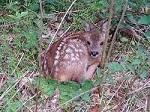 There are large numbers of of two creatures, the wolf's natural prey, the fallow deer and the roe deer. Fallow deer were introduced to the area, basically for hunting, but the roe deer is certainly indigenous, though now contaminated by other animals which have been introduced by hunting associations.
There are large numbers of of two creatures, the wolf's natural prey, the fallow deer and the roe deer. Fallow deer were introduced to the area, basically for hunting, but the roe deer is certainly indigenous, though now contaminated by other animals which have been introduced by hunting associations.
Other mammals include the now rare wildcat, badger, marten 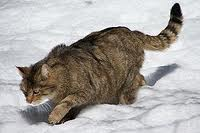 and otter. Squirrels are common,including a good number of the typical souther squirrel, and wild boar have been introduced to many areas and are extensively hunted. There are also numerous species of small rodents, hares and foxes.
and otter. Squirrels are common,including a good number of the typical souther squirrel, and wild boar have been introduced to many areas and are extensively hunted. There are also numerous species of small rodents, hares and foxes.
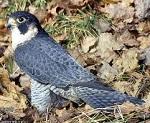 Birds, resident migratory, are more numerous than mammals. All the small forest birds are present in the region, as well as the pied woodpecker, the tits, nuthatch and jay, together with considerable number of birds of pray,some of them rare.
Birds, resident migratory, are more numerous than mammals. All the small forest birds are present in the region, as well as the pied woodpecker, the tits, nuthatch and jay, together with considerable number of birds of pray,some of them rare.
Long-eared owls, goshawks, sparrow hawks, red kites, barn owls and
buzzards are common, eagle owls are rarer but certainly present.
There is also a particular species of viper, Viper aspis hugyi, known as the southern viper and the rare spectacled salamander is sometimes to be seen.
Altough the Calabrian National Park was estabilshed in 1968, with a view to protecting plants and wildlife, its boundaries were not clearly defined untill 1978, when more efficient administration of the territory was undertaken. Luckily, since most of the territory already belonged to the State, the forests had been scrupulously maintained and the wildlife protected by hunting bans..
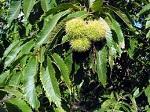 The National Park consist of three separate areas of territory, namely: a stretch of the Sila Grande forest, part of the Sila Piccola forest and the entire Aspromonte.
The National Park consist of three separate areas of territory, namely: a stretch of the Sila Grande forest, part of the Sila Piccola forest and the entire Aspromonte.
Geologically, these areas differ very little, since the substratum is basically granite and micaschistous rock of archaic origin.
The vegetation is essentially woodland, with beech, chestnut woods, there are also black and Neapolitan alders.
Indigenous plants of interest include gorse (Genista angliaca).
This is most certainly a botanical intruder here being a typical plant of rough moorland overlooking the Atlantic Ocean.
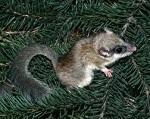 On the Aspromonte the forest dormouse (Dryomis nitedula) is a native specie not found elsewhere in Italy, except in the eastern Alps.
On the Aspromonte the forest dormouse (Dryomis nitedula) is a native specie not found elsewhere in Italy, except in the eastern Alps.
Birds include a small residual population of black woodpeckers, found only in a few other parts of Italy; apart from the Sila, it is restricted to the Pollino and east-central Alps.
The whole park area (17,000 hectares ,of which 7,000 in Cosenza province,6,000 in Catanzaro and 4,000 in Reggio di Calabria) can be freely visited, with due regard for Park rules and regulations.
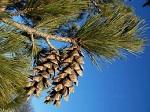 The Pollino National Park has been established in the Basilicata-Calabria border area, including the Monte Pollino massif (2,248 m), right on the demarcation line between these regions, together with the Serra del Dolcedorme, which reaches a height of 2,267 m. in Calabria.
The Pollino National Park has been established in the Basilicata-Calabria border area, including the Monte Pollino massif (2,248 m), right on the demarcation line between these regions, together with the Serra del Dolcedorme, which reaches a height of 2,267 m. in Calabria.
The slopes are covered with beech forests, with intrusions of silver fir, giving way to Turkey oak lower down towards the sea; higher up, grows the Calabrian pine, originally a tree of the Balkans peninsula, found in Italy only in a few restricted areas. There are still 2,000 of these pines on the Pollino, nicknamed "the sentinels of Pollino", to be protected at all cost.
 In addition to the commoner species of wildlife which are found in the entire region, a certain number of wolves still range the hills, and a rare porcupine still makes its home here. Unfortunately, prejudice has led to indiscriminate hunting of these animals, and the Apennine wolf is on the verge of extinction; a great pity indeed.
In addition to the commoner species of wildlife which are found in the entire region, a certain number of wolves still range the hills, and a rare porcupine still makes its home here. Unfortunately, prejudice has led to indiscriminate hunting of these animals, and the Apennine wolf is on the verge of extinction; a great pity indeed.
 At last one pair of golden eagles (Aquila crysaetos) is know to breed there.
At last one pair of golden eagles (Aquila crysaetos) is know to breed there.
In spite of its inaccessibility, for all eagles choose isolated high ledges for their nests, the eyre requires protection during the breeding season. Surprisingly, people will risk their necks to steal the young birds,and indeed often succeed.
Next Page: Excursions & Tours




 There are large numbers of of two creatures, the wolf's natural prey, the fallow deer and the roe deer. Fallow deer were introduced to the area, basically for hunting, but the roe deer is certainly indigenous, though now contaminated by other animals which have been introduced by hunting associations.
There are large numbers of of two creatures, the wolf's natural prey, the fallow deer and the roe deer. Fallow deer were introduced to the area, basically for hunting, but the roe deer is certainly indigenous, though now contaminated by other animals which have been introduced by hunting associations. and otter. Squirrels are common,including a good number of the typical souther squirrel, and wild boar have been introduced to many areas and are extensively hunted. There are also numerous species of small rodents, hares and foxes.
and otter. Squirrels are common,including a good number of the typical souther squirrel, and wild boar have been introduced to many areas and are extensively hunted. There are also numerous species of small rodents, hares and foxes. Birds, resident migratory, are more numerous than mammals. All the small forest birds are present in the region, as well as the pied woodpecker, the tits, nuthatch and jay, together with considerable number of birds of pray,some of them rare.
Birds, resident migratory, are more numerous than mammals. All the small forest birds are present in the region, as well as the pied woodpecker, the tits, nuthatch and jay, together with considerable number of birds of pray,some of them rare. The National Park consist of three separate areas of territory, namely: a stretch of the Sila Grande forest, part of the Sila Piccola forest and the entire Aspromonte.
The National Park consist of three separate areas of territory, namely: a stretch of the Sila Grande forest, part of the Sila Piccola forest and the entire Aspromonte. On the Aspromonte the forest dormouse (Dryomis nitedula) is a native specie not found elsewhere in Italy, except in the eastern Alps.
On the Aspromonte the forest dormouse (Dryomis nitedula) is a native specie not found elsewhere in Italy, except in the eastern Alps. The Pollino National Park has been established in the Basilicata-Calabria border area, including the Monte Pollino massif (2,248 m), right on the demarcation line between these regions, together with the Serra del Dolcedorme, which reaches a height of 2,267 m. in Calabria.
The Pollino National Park has been established in the Basilicata-Calabria border area, including the Monte Pollino massif (2,248 m), right on the demarcation line between these regions, together with the Serra del Dolcedorme, which reaches a height of 2,267 m. in Calabria. In addition to the commoner species of wildlife which are found in the entire region, a certain number of wolves still range the hills, and a rare porcupine still makes its home here. Unfortunately, prejudice has led to indiscriminate hunting of these animals, and the Apennine wolf is on the verge of extinction; a great pity indeed.
In addition to the commoner species of wildlife which are found in the entire region, a certain number of wolves still range the hills, and a rare porcupine still makes its home here. Unfortunately, prejudice has led to indiscriminate hunting of these animals, and the Apennine wolf is on the verge of extinction; a great pity indeed. At last one pair of golden eagles (Aquila crysaetos) is know to breed there.
At last one pair of golden eagles (Aquila crysaetos) is know to breed there.